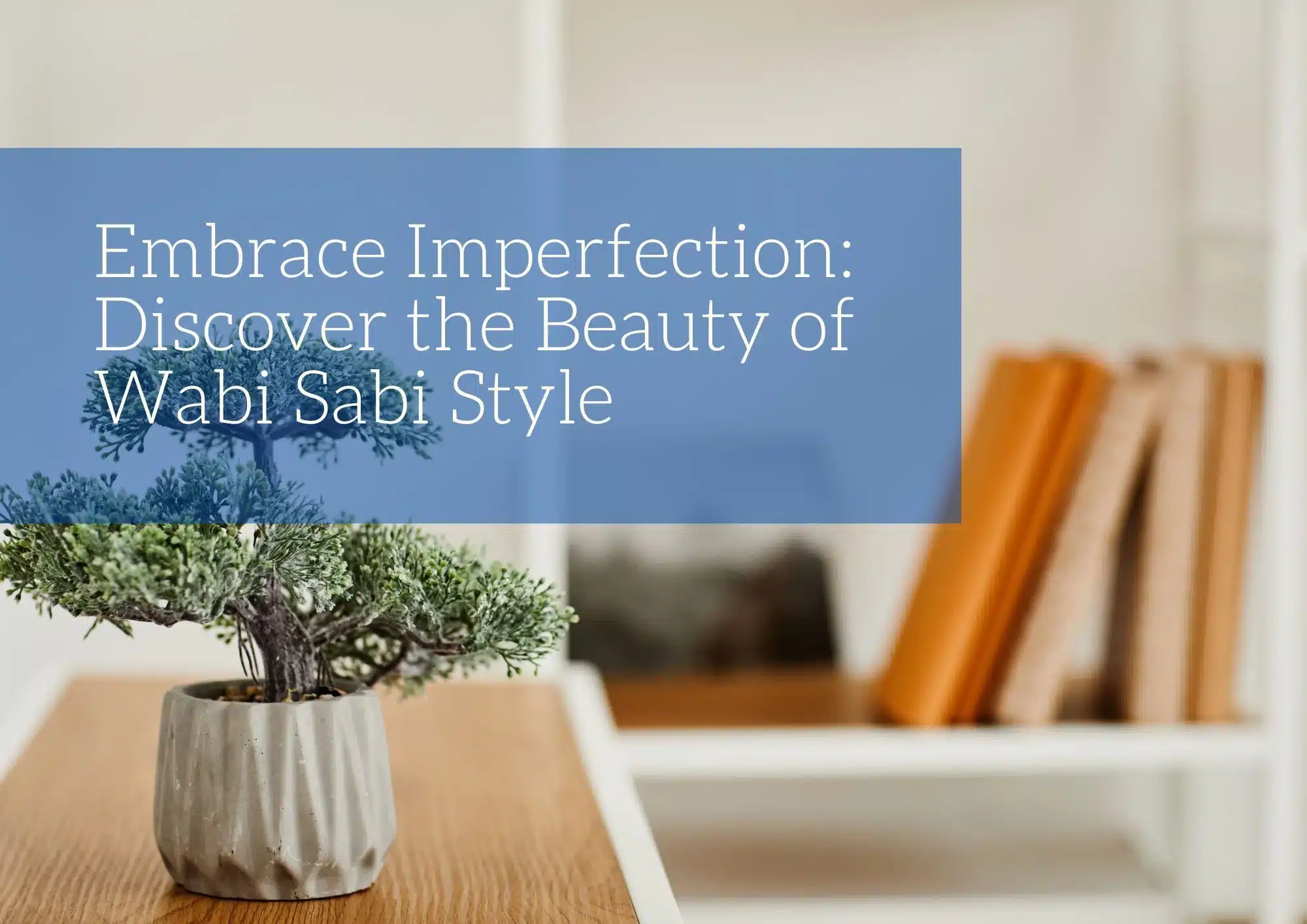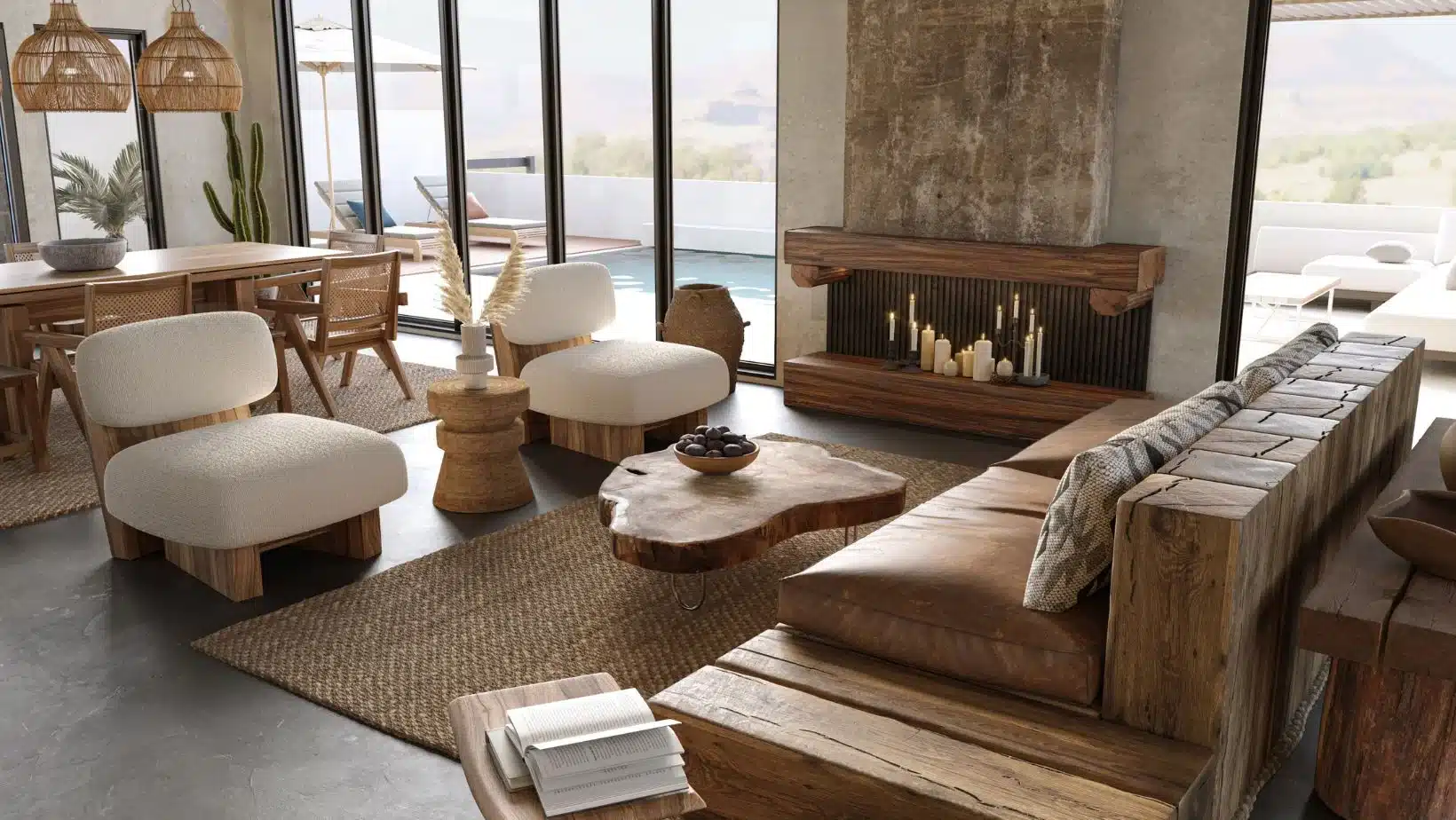In a world that often celebrates perfection and symmetry, there’s a refreshing design philosophy that embraces the beauty of imperfection and transience: Wabi Sabi. Originating from Japanese aesthetics, Wabi Sabi is more than just a decorating style; it’s a way of living that celebrates simplicity, imperfection, and the natural world. In this blog, we’ll explore the essence of Wabi Sabi style and how you can incorporate its principles into your home.
What Is Wabi Sabi?
Wabi Sabi is a Japanese concept that finds beauty in imperfection, impermanence, and incompleteness. It values simplicity, frugality, and the authenticity of natural materials. Wabi Sabi encourages us to appreciate the beauty of things that are weathered, worn, or aged, recognizing the unique character and history they embody. It’s about finding joy in the imperfect, the fleeting, and the natural.
Core Principles of Wabi Sabi Style
Embrace Imperfection
In contrast to prevailing design norms that prioritize flawless aesthetics, Wabi Sabi celebrates the allure of imperfection. Within Wabi Sabi philosophy, cracks, chips, and weathering serve as symbols of character and narrative. Imperfections impart a sense of warmth and authenticity, fostering a lived-in, inviting ambiance within Wabi Sabi homes.
Use Natural Materials
Natural materials play a pivotal role in Wabi Sabi design, showcasing the inherent beauty of nature. Wood, stone, and clay are favored for their earthy textures and organic aesthetics. In Wabi Sabi style, these materials are often left in their raw, untreated state, allowing their natural qualities to shine through. For instance, a hardwood table may retain its natural grain and knots, while a stone floor might remain rough and unpolished.
Employ Muted Colors
Wabi Sabi interiors embrace a soft color palette, deliberately chosen to highlight the innate beauty of materials and textures while minimizing the impact of bold or vibrant colors. Inspired by the natural world, this palette features earthy tones such as beige, taupe, and gray. These hues are selected for their calming and grounding qualities, harmoniously blending to evoke a sense of balance and tranquility within the space.
Be Minimalistic
Wabi Sabi design exudes tranquility and serenity by prioritizing simplicity, offering a soothing contrast to today’s hectic and demanding lifestyles. Embracing minimalist furniture arrangements and open floor layouts, Wabi Sabi interiors create a sense of spaciousness and allow natural light to flow freely. This design ethos also advocates for multi-functional furniture and storage solutions, promoting cleanliness and organization to cultivate peaceful living environments.
Celebrate Handcrafted Artistry
Wabi Sabi style infuses homes with warmth and authenticity through the incorporation of handcrafted items, a rarity in contemporary spaces. Take, for instance, a hand-woven rug that bears subtle inconsistencies in pattern or color, enhancing its allure and individuality. Similarly, an artisan vase may boast slight variations in shape or texture, further accentuating its distinctiveness. These imperfections contribute to the charm and character of Wabi Sabi interiors, fostering a sense of connection to craftsmanship and tradition.
Japandi vs. Wabi Sabi
Japandi design seamlessly merges the minimalist aesthetic and functionality of Scandinavian style with the heritage, refinement, and craftsmanship of Japanese design. While both Japandi and Wabi-Sabi share a penchant for clean lines, natural materials, and muted colors, Japandi often incorporates more contemporary and geometric elements. In contrast, Wabi-Sabi leans towards rustic and organic features, prioritizing the use of natural materials and embracing imperfection and age.
Embracing the principles of the Wabi Sabi style can bring a sense of tranquility, authenticity, and beauty to your home and your life. By celebrating imperfection, simplicity, and the passage of time, you can create spaces that are soulful, meaningful, and deeply resonant. So let go of perfectionism, embrace the natural beauty of imperfection, and discover the profound joy of Wabi Sabi living.









